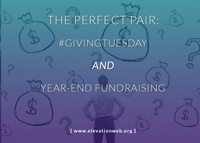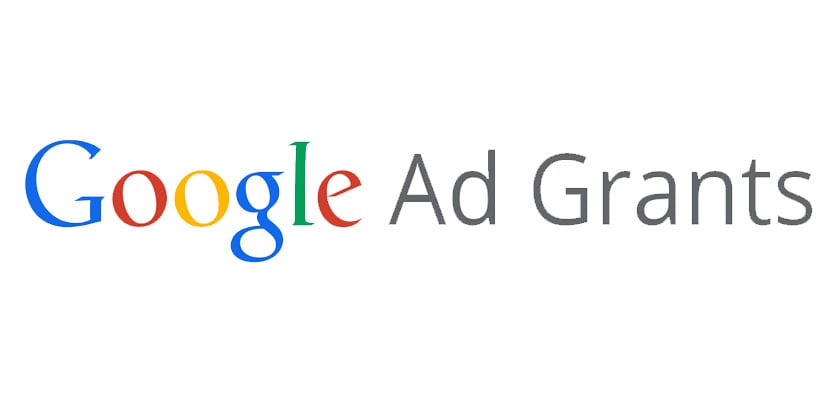This was originally published on socialfish.org
It’s inevitable that as your organization continues to gain momentum and supporters, you’ll have to think about purchasing nonprofit fundraising software.
From researching products, to talking with vendors, viewing demos, and pitching to the board, buying fundraising software can be an intensive and overwhelming process.
Since nonprofit software plays such a key role in successful fundraising, it’s essential that you choose a program that will help your organization prosper as it continues to expand.
So where do you begin?
In this article, we’ll go over four key tips to choosing the best fundraising software for your budding organization:
1. Choose a software that will be the best size and fit for your nonprofit’s needs.
2. Select a software that can be easily integrated with other needed platforms.
3. Buy a software that fits into your organization’s budget.
4. Choose a package that offers comprehensive training and IT support.
If you keep these considerations in mind, you’ll be well on your way to getting a software that will help your organization grow and thrive.
Let’s get started!
As the world has become increasingly more technological, a wide and diverse array of organizational software has been developed to assist nonprofits in their fundraising and stewardship efforts.
These solutions include (but aren’t limited to):
- Online fundraising software
- Donor databases or nonprofit CRMs
- Membership or associate management software
- Event planning software
- Peer-to-peer software
- Volunteer management software
- Mobile giving software
With so many options available, it can be hard to know which is going to be right for your nonprofit.
So, it’s first and foremost important to take some time to think about your organization’s most pressing needs.
What goals do you have for your nonprofit? What sorts of software features would best address these needs?
Then, take a look online to get a sense of what kinds of software solutions are out there and the basic feature sets of each.
The most generalized type of software is a nonprofit donor database, or nonprofit CRM. They allow organizations to track all aspects of their donor relationships, and they usually include basic online fundraising and communications features as well.
But you may decide that you need a more specialized software to best address your organization’s needs — and that exists too!
For example, if you find your organization is raising the majority of money through membership programs, it’s probably a good idea to seek out membership management software. Alternatively, if your goals center around ramping up your donor engagement, it may make sense to check out mobile giving software such as text-to-give programs.
Another important consideration to factor in when choosing a fundraising software is its size and capacity.Your organization is going to grow, so you want to be sure that your software of choice grows with it!
Nonprofit software is often priced based on the number of constituents it is able to hold. So, when making decisions about which package to choose, make sure that you are taking into consideration not only your current supporters, but your future ones as well.
Constituents to take into account include:
- Members
- Volunteers
- Advocates
- Staff members
- Board members
- Event attendees
- Media contacts
Make a projection as to how much your supporter base will grow in the next 3-5 years, and choose a software that will accommodate that increase. You’ll need that wiggle room so that you won’t have to go back to the drawing board after a few months when you’ve outgrown your software!
The bottom line: Take into consideration your organization’s main needs and goals, plus your current and projected constituency size, when deciding on what fundraising software to purchase to ensure you’re getting the best fit for your nonprofit.
Another important consideration to keep in mind is how your chosen software will work with any existing platforms you’re already using.
Oftentimes, nonprofits buy a program only to realize later on that the platform they’re already using to address certain needs can’t be integrated. Alternatively, they may find that they require certain features that their base software package can’t accommodate at all.
The best software programs are those that can easily incorporate third party platforms for added functionality.
You probably already have some software programs that you use regularly in your organization’s day-to-day activities. So, you’ll want to make sure that the fundraising software you’re considering will support an integration with these platforms. The best way to find this out is to ask your vendor!
You also should factor in your organization’s future needs. Think about where you see your nonprofit in 3-5 years. Are you planning to hold a capital campaign? Do you envision your nonprofit accepting lots of online donations?
You may eventually need to add in some other software down the line, so make sure that the software you choose now has the flexibility to work with multiple different platforms.
Common integrations to think about include:
- Accounting
- Payment processing
- Email marketing
- Social sharing
- Matching gift tools
- Wealth screening
As always, research is key. Go into the shopping process armed with as much information about your nonprofit’s unique needs as possible, and make sure to ask as many questions as necessary to figure out what is going to be the best choice.
The bottom line: Since your organization may require different software programs to address different needs, double check that your new software can be integrated with the other platforms so you can get all the features you need.
Budgeting for a new software is trickier than it might seem at first glance.
However, many organizations aren’t aware of this fact as they enter into the buying process. They see the price listed on the pricing page and assume that’s what they will be paying.
But the list price of a software program often isn’t the “real” price — that’s just the price for the base software package and features. It isn’t taking into account all of the additional fees and costs that go along with implementing a new software.
So, when considering making a purchase, make sure you’re factoring in these “hidden” costs!
Ask your vendor outright about your desired program’s pricing and about any additional costs that may not be included in the list price.
Some expenses to be on the lookout for include:
- Expansions and integrations.
- Updates to your software over time.
- Payment processing fees.
- Training, setup, and maintenance fees.
Finally — and most importantly — read the fine print!
Don’t make the mistake of signing a contract without being intimately familiar with all of its contents. Talk over the contract with your vendor and make sure you both are comfortable with what it says before you sign.
The bottom line: Cost is one of the most important considerations nonprofits need to take into account when choosing a software package. Make sure you are understanding all of the costs of a software before purchasing.
Another crucial yet often overlooked factor to consider before making a fundraising software purchase is the amount of technical and training support you will receive.
Sometimes, once nonprofits have purchased a software, their vendor all but disappears, leaving them high and dry. Your relationship with your vendor shouldn’t stop once you sign the contract!
Vendors provide needed technological and training support that is vital to take into consideration when choosing a program for your organization.
Think about the various steps of setup and training that you’ll need help with, and ask your vendor how they usually support their customers.
You’ll probably want to ask about support in the following areas when getting your new software program up and running:
- Data migration or syncing
- Training
- Initial and ongoing IT support
This blog has written before about the complex yet essential process of syncing up your donor data. It is the first hurdle your organization will have to deal with after settling on a software platform.
Data migration is a complicated, multi-step process that involves cleaning up existing data, exporting it from the old system and importing it into the new one, and then reviewing data to make sure the transfer was completed successfully.
Be sure to ask your vendor how they handle data migration and the level of support they can provide to your organization.
This step is crucial but time-consuming and can swiftly become problematic for your organization’s operations if your vendor doesn’t provide you with the support you need. Talk with your vendor first before buying to make sure they are ready and able to support you through the data syncing process.
Similarly, be sure that your vendor is equipped to provide any needed technical support and training to your team while you adjust to the new software program.
Your vendor is the one that will train your staff on the new system and will be the first point of contact you turn to when something goes wrong. It’s therefore important that they can be easily contacted to address issues quickly, so that your organization can stay fully functional.
So, make sure the vendor you choose is attentive and responsive so that you’re never left to figure things out on your own.
Some key questions to ask your prospective vendor regarding IT support and training include:
- How often are IT consultants available?
- What’s the best way to get into contact with you or with other support personnel?
- What’s the typical turnaround time for addressing software issues?
- Are there any costs/fees associated with training or tech support?
It can also be helpful to consult current users to get a better idea of how supportive the prospective vendor actually is when it comes to addressing technical difficulties. Ask your vendor for a list of references, and follow up with them to get an insider’s opinion.
The bottom line: Data migration, training, and IT support all play a crucial role in your organization’s ability to use your software as well as possible. Ask your vendor about all of these to ensure that you’ll receive enough support.
Keeping these 4 key considerations in mind as you enter the buying process should ensure that you obtain the best software to help your organization grow and thrive.
If you have any comments or questions please reach out to us we love hearing from you!




